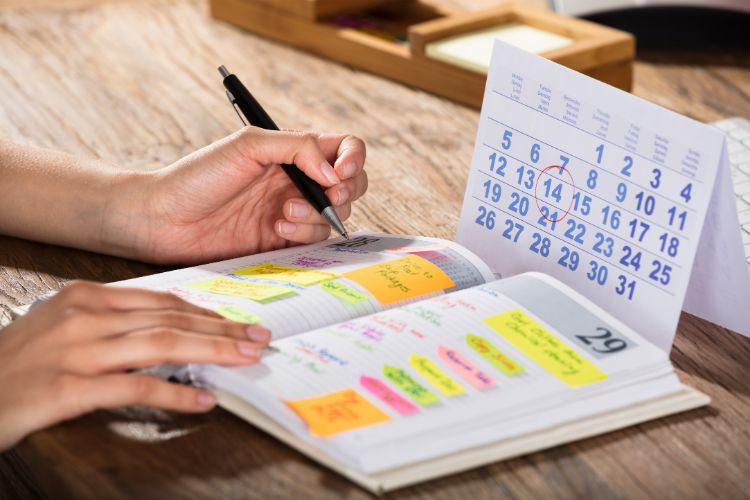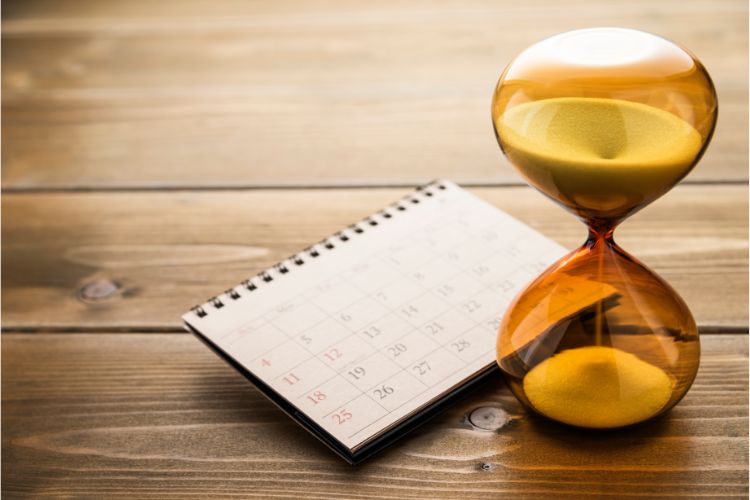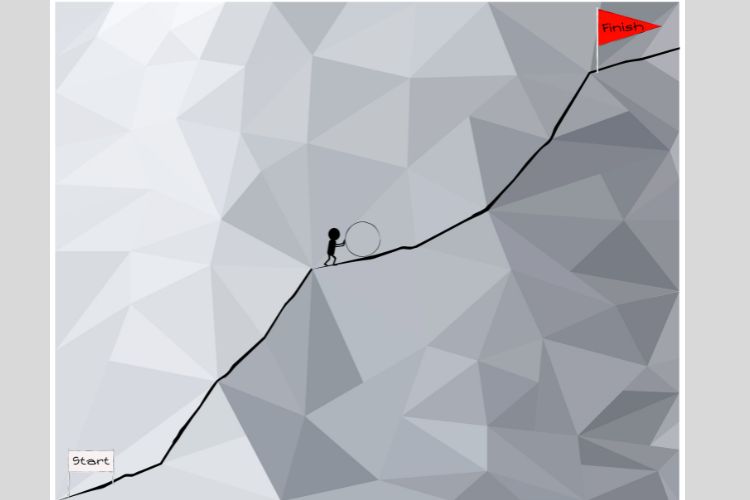Deliberate Learning Is Essential to Language Learning
Deliberate learning can involve a teacher teaching, but it primarily involves learners taking responsibility for their learning.
What Deliberate Learning Activities Should Learners Do?
Learners must organize their deliberate learning. The most important deliberate learning activity is using word cards. They must take control of this extremely effective activity and continue to use it to learn new vocabulary and, more importantly, to rehearse previously learned vocabulary terms.
Some teachers may advise learners against this strategy due to the belief that all vocabulary learning must occur in context.

These people, however, are misinformed.
While it’s critical to learn vocabulary in context through meaning-focused input, meaning-focused output, and fluency development. It’s also critical to use word cards for deliberate decontextualized learning. This type of learning is extremely efficient and effective.
Some people believe that because word card learning involves first-language translation, it encourages people to think in their native language rather than a foreign language.
However, research has shown that in the early and intermediate stages of language learning, the first and foreign languages are inextricably linked.
Learners should use dictation, transcription, delayed copying, and oral repetition activities in addition to word card learning to gain familiarity with spoken and written forms.
They should also do intensive reading, preferably using an electronic reader such as a Kindle so that there is easy word look-up via the built-in dictionary feature.
To Effectively Learn a New Language Using Guided Immersion, a Learner Should:
- Work out their needs and learn what’s most useful for them, giving particular attention to items that occur frequently in the language.
- Balance their learning across the Guided Immersion Five-Factor Framework.
- Apply conditions that help learning, particularly spaced repetition, retrieval, varied meetings and use, elaboration, and deliberate attention, particularly by using effective language learning activities.
- Keep motivated and work hard by setting short-term goals, doing something to learn the language every day, learning useful things, learning about learning the language, and developing special interests.
- Spend time using the language skills (listening, speaking, reading, and writing) that they need to learn.
- Avoid interference by separating items closely related in meaning, such as near-synonyms, opposites, and members of a lexical set.
- Take responsibility for their learning by learning how to learn, setting clear, manageable goals, and monitoring their learning.
- Take every possibility to employ and practice what they know.
Although these opportunities may be limited outside the classroom, the Internet now provides many such opportunities.
In addition, the relative ease of foreign travel also makes it possible to visit countries where the language they’re learning is spoken. If they prepare for such experiences carefully, learners can gain an enormous amount from them.
How Should You Study?
Do you remember last week? It was a typical week, and you had the perfect work–life balance.
You went to bed and woke up at the same time each day, clocking in eight hours of sleep. Each morning, you hit the gym for 45 minutes, and nothing popped up to disrupt your calendar entries for the day.

If you don’t remember a week like that, it’s probably because you’ve never had one. Neither have I. Late at night, early in the morning, while we shower, or during our commute, we all let our minds wander to how things should be as opposed to how they are.
If only we had woken up 15 minutes earlier; if only we didn’t eat that extra cookie; if only that red light had stayed green a moment longer, our day would have been perfect.
Of course, in the real world, that rarely happens. We cram in as many activities as we can each day, and with all our competing priorities, it can feel like a losing battle.
How, then, can we find time to commit to consistent language learning activities—that is, studying regularly? Equally important, how much time should we be studying each day?

In a perfect world, you’d carve out 45–90 minutes daily for your language learning efforts. You might divide your time across multiple activities and resources.
You might use an app for vocabulary, listen to audio or video for comprehension, read short stories, engage with a native speaker, and practice writing or typing.
Of course, none of us live in that perfect world; few can devote so much time consistently across such a rich range of resources.
So, getting back to the key question: how much should you study? The short answer is as much as possible. Realistically, however, at least 20 minutes per day should be dedicated to learning a new language.
The ideal amount of time to spend on daily study, if you can find the time, is an hour, but you don’t need to cram it all in at once, and I have some tips on how to find the time.
First, I’ll introduce you to your new best friend: micro-learning.
Set Time Aside for Micro-Learning
When language learners are still in high school or college, studying is part of daily life. Once these language learners graduate, find jobs, and start families, they find it more challenging to set aside time for studying.
Fortunately, even individuals with a packed schedule can study for just a few minutes per day using a micro-learning methodology.

Micro-learning is a technique that breaks a difficult task into a series of very quick learning interactions distributed over time. Many of these tasks are performed on cell phones, tablets, or computers.
These devices can be accessed multiple times during routine everyday occurrences, such as waiting for a bus or eating lunch. Micro-learning uses your spare time without the need to sit down and study for a long time.
I lose focus when I study for more than 20 or 30 minutes at a time. I still try to put in my daily hour, but using micro-learning.
I break my efforts into smaller chunks throughout the day. This approach allows me to remain focused with a bit of flexibility and helps me look forward to my study “sprints” rather than dreading study “marathons.”
Set Realistic Goals
When considering how much to study, you’re actually considering setting goals. Like any project, setting intentional goals really helps because it breaks up a large project into smaller steps and helps you track your progress.
As you meet your goals, you’ll feel good about yourself, which helps you stay motivated to continue.
So it’s worth your time to set language learning goals before you plunge in. Here are three things I’d like you to consider as you do so.
1. Set a Realistic, Yet Consistent Study Schedule (Draw a Time Grid)
Many language learners start their language study program by assuming they will study for several hours daily, despite having jobs, families, and friends.
Realistically, such an assumption is bound to be a terrible failure. Instead, assess your work and leisure schedule, and then plan on where in this schedule you have the time for study.

Draw a calendar grid featuring all the days of the week, with each day broken down into individual hours. Fill it in with your typical daily activities.
Be specific. For example, if you commute to work for one hour, that should be labeled “commuting,” not “working.” If you spend one hour watching TV, that block of time should be labeled “watching TV.”
Hopefully, you’ll find some free time within your grid. These times are the most obvious candidates for study. However, if there’s no free time, or if it’s lacking on certain days, you can identify activities that might be given up to make more time for language study.
Finally, look for activities during which you can study while completing a separate task (like commuting).
When planning a study schedule, you must not be overly ambitious. For example, blocking every free moment with language study will result in burnout. Likewise, eliminating favorite activities, such as watching TV, going out with friends, or resting, is not realistic.
In short, you need to create a schedule you can commit to without being overly taxed.
Interruptions during study sessions must be avoided or minimized as much as possible. Fortunately, if study periods are scheduled, you, as the language learner, can communicate to your friends and family members that you are unavailable during these times.
2. Incorporate Diverse Learning Activities
True language fluency is a product of reading, writing, speaking, and listening. Therefore, the best study methods take advantage of all those qualities.
To this end, language learners should certainly spend time alone, where they can focus on reading, writing, listening, and speaking—picking up new vocabulary and learning proper sentence structure and meaning.
However, that’s only half the process of attaining language fluency. To master a language, you should also seek out and work with native speakers. They can be found in the classroom, in your local community, through a private tutor or instructor, or via a language exchange partner.
Fortunately, finding language exchange partners is fairly easy, thanks to various online platforms. A simple Google search will turn up dozens of options.
Native speakers of one language can team up with those of another language using Skype or various social media platforms.

The platform also allows you to hire professional language instructors or tutors and pay for single or batch lessons.
Furthermore, these tutors should provide regular feedback about your progress, including a report every few months, to ensure you are on the right track.
Depending on your schedule, budget, and language proficiency, different language exchange partners can aid in the language study and practice processes.
3. Align Your Study Activities with Personal Goals
We all learn languages for different reasons.
For example:
- To talk with spouses or in-laws
- Land new jobs or get promoted at the ones we have
- Read novels in their original language.
Depending on your personal goals, your language study methods and materials should differ. For example, if you wish to converse better with your in-laws, you’ll probably spend a lot of time listening to radio broadcasts and reading the newspaper in your desired foreign language.

You’ll also attempt to correctly pronounce everyday phrases and words. A language learner who wishes to enjoy literature in the native tongue will spend more time analyzing verb forms or looking up the different meanings of words.
4. Create SMART Goals
Every language learner needs a way to measure and verify their progress. Creating SMART goals helps you track the success of your language study method.
Likewise, if you have any personal targets, such as speaking more fluently or reading faster, setting SMART goals helps determine if your efforts are paying off.
In 1981, George T. Doran first introduced SMART goals. The paper, titled “There’s a S.M.A.R.T. Way to Write Management’s Goals and Objectives” set criteria for specific, measurable, achievable, relevant, and time-bound goals.
These goals helped improve the likelihood goals would be achieved.
Specific
Specific goals typically answer the questions of who, what, when, where, or which. For example, a specific language goal might be to become capable of reading a newspaper in six months.
This goal is specific because it answers the questions of who (the language learner), what (read a newspaper), and when (in six months).
Measurable
If reading a newspaper in six months is your goal, you need a way to determine that you’re pronouncing the words correctly and that you understand what you are reading.
One way to measure fluency is through standardized proficiency tests that enable instructors or employers to know that the person can speak the language. Similarly, some apps provide tests so language learners can measure their success.

Achievable
For your goal to be achievable, you must possess certain skills and tools or the means to acquire them.
As a language learner, this means you need access to various learning materials, such as textbooks, study notes, language-learning apps, audio courses, books, movies, or audio files developed by and for native speakers.
Relevant
A relevant goal should align with the larger schematic of your life and ambitions. Perhaps you wish to read the newspaper so you can get around a foreign country when you travel there. Here, wanting to read the newspaper is a relevant goal.
Time-bound
Finally, your goal must be tied to a given target date. Otherwise, there will be no motivation to complete it. Often, if a goal is time-bound, it’s useful to create halfway or even quarter-way targets to keep on track.
How Much Time Should You Study?
As we wrap up this section, I’ll leave you with another personal experience that may hit home for some of you.
During that eight-week period I mentioned earlier, I studied four hours per day, Monday through Friday. I woke up extra early, crammed in some study during my lunch break, and burned the midnight oil.
I felt I was studying the right things the right way, and I think that’s a fair assessment.

At the time, I felt like a bit of a humble brag. I’d let slip that I was very disciplined in my studies, and I objectively advanced my learning.
Over those eight weeks, I invested 160 hours of effort into my studies.
When done, I decided I’d earned a rest. Then I got really busy, and of course, something popped up at work. It took me about three months to return to a consistent (less intense) study routine.
By the time I got back into my study routine, I’d lost some momentum and some of what I thought I’d learned had begun to fade in my mind.
Over two months, I studied for 160 hours, but in those five months, I’d still only clocked those 160 hours.
Let’s be generous and pretend I only had to relearn 20% of the material I’d forgotten. On a net basis, I benefited from 128 hours of study over five months. Those five months reflect about 150 calendar days.
Had I consistently invested around 45 minutes daily, I’d have been a lot more efficient with my time, and I wouldn’t have burned out following my eight-week marathon.
Live and learn, right? Feel free to learn from my mistakes.
Now that we’ve talked about a daily or weekly study schedule, let’s next look at how much time we’re talking about for your whole project.
Learn to Find Your Balance
Studying and learning are certainly necessary. I believe learning is more effective and more fun, and I hope you’ll choose to focus your time there.
How much time? In my language learning, I take an 80/20 approach.
I aim to use about 80 percent of my language-acquisition time learning (listening to audiobooks, conversing with native speakers, watching movies, etc.) and 20% of it studying (using books, classes, apps, etc.), but each person will find the right balance for himself or herself.







